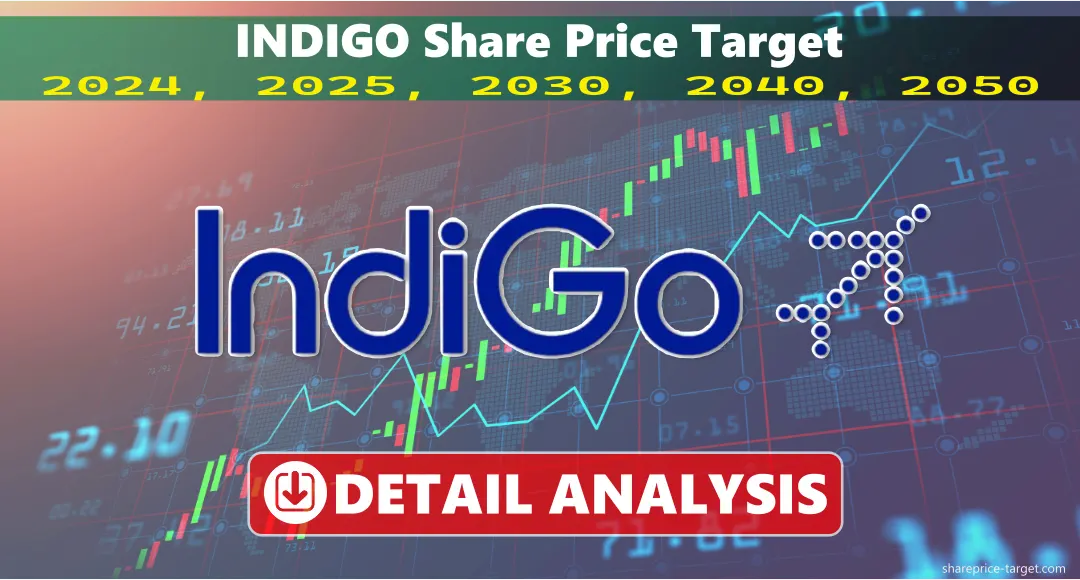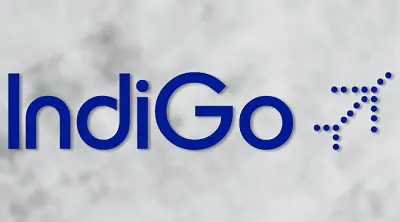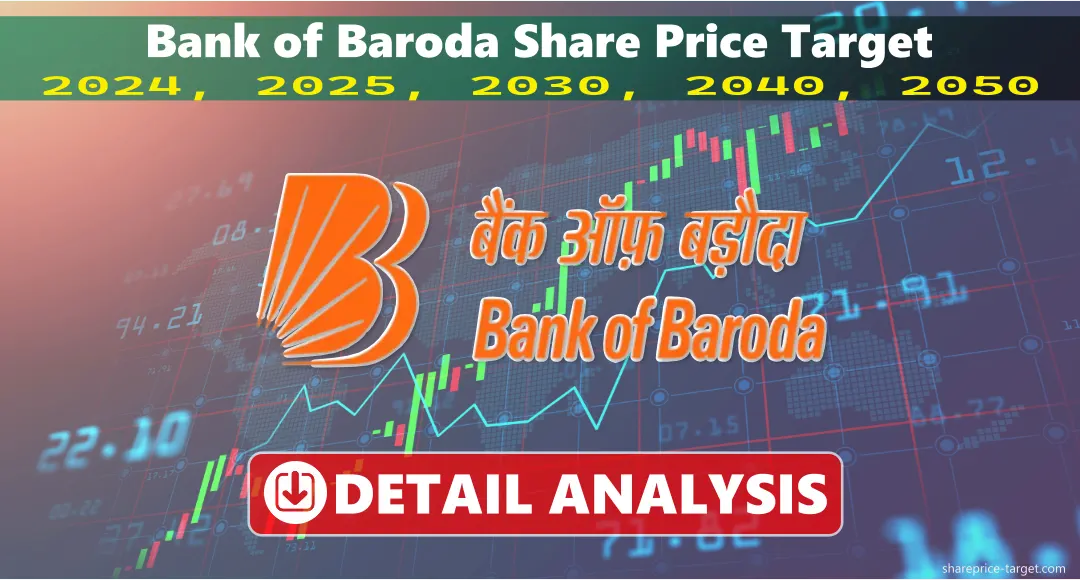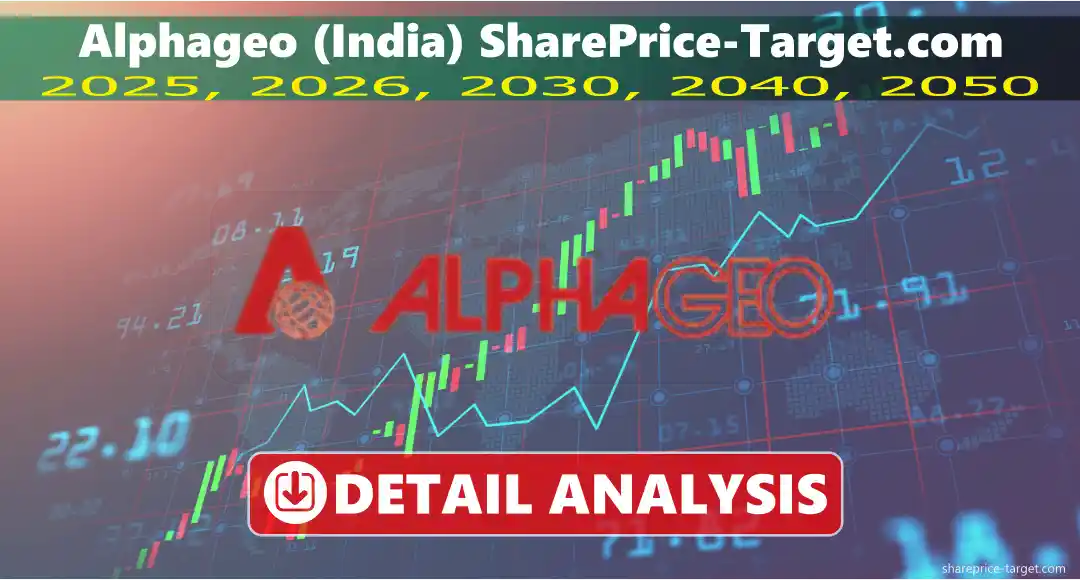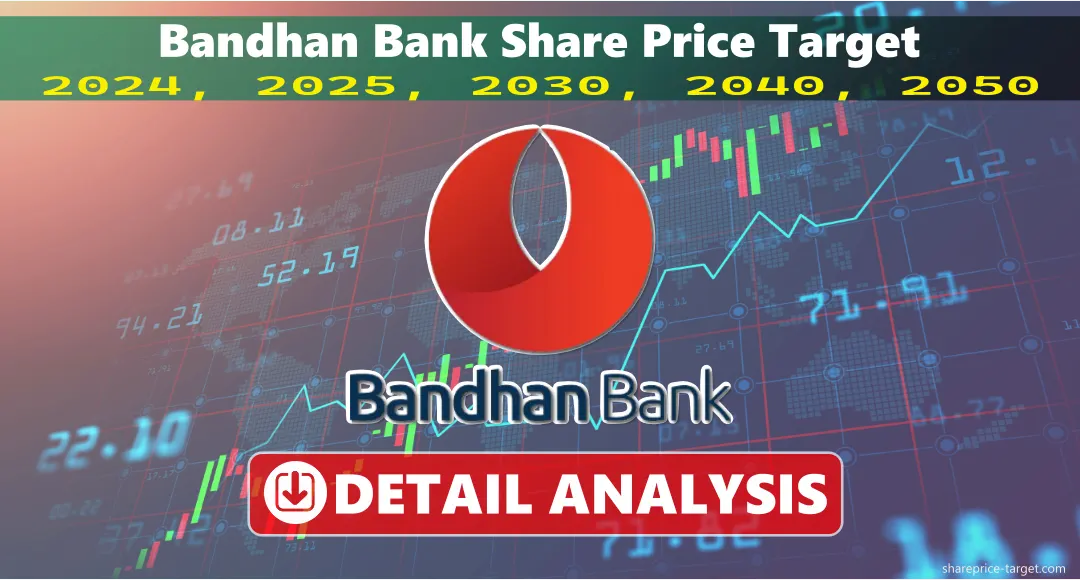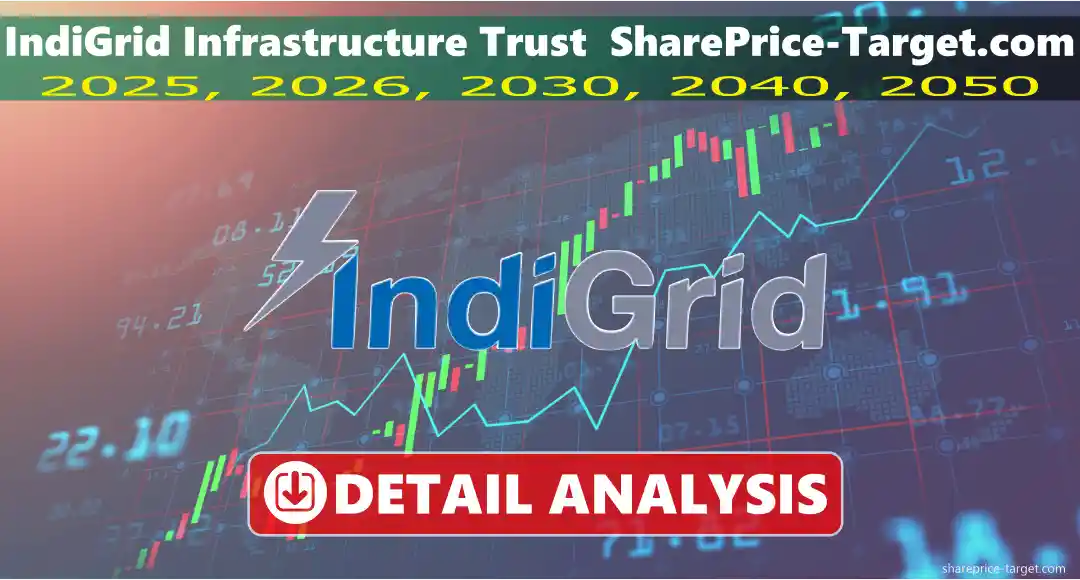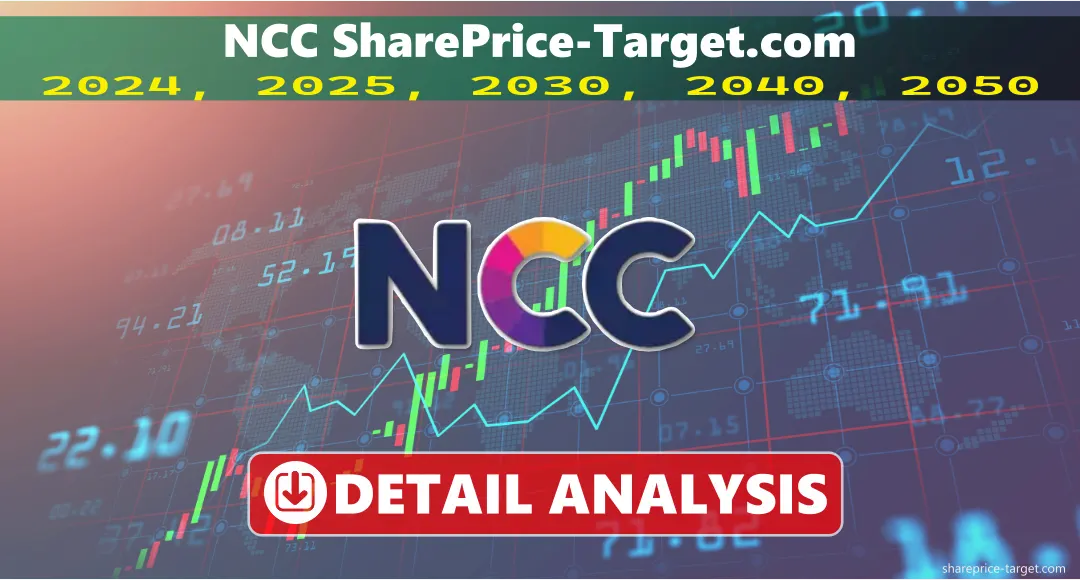INDIGO Share Price Target 2025, 2026, 2030, 2040, 2050
IndiGo is India’s biggest passenger airline and low-cost carrier. As the aviation industry recovers and grows post-pandemic, IndiGo prospects and share price ambitions intrigue investors.
This article analyses the share price in 2024, 2025, 2030, 2040, and 2050 projections based on market trends, financial performance, and industry forecasts.
- 1 What is InterGlobe Aviation Ltd (NSE: INDIGO)?
- 2 INDIGO Share Price Target
- 3 INDIGO Share Price Target 2025
- 4 INDIGO Share Price Target 2026
- 5 Share Price Target 2027
- 6 Share Price Target 2028
- 7 Share Price Target 2029
- 8 INDIGO Share Price Target 2030
- 9 Share Price Target 2040
- 10 Share Price Target 2050
- 11 Should I buy INDIGO stock?
- 12 InterGlobe Aviation Ltd Earning Results
- 13 Expert Forecasts on the Future of InterGlobe Aviation Ltd
- 14 Is INDIGO stock good to buy? (Bull case & Bear case)
- 15 Conclusion
- 16 FAQs
What is InterGlobe Aviation Ltd (NSE: INDIGO)?
InterGlobe Aviation Ltd., branded IndiGo, is a Gurugram-based low-cost airline. Founded in 2006, IndiGo is India’s biggest airline by passengers and fleet. Over 1,600 daily flights serve 98 destinations, including 74 domestic and 24 overseas routes. it prides itself on timeliness, low rates, and modern planes.
Fundamental Table
| Metric | Value |
| Market Cap | ₹1.87T |
| P/E Ratio | 23.91 |
| EPS (TTM) | ₹201.99 |
| ROE | 71.82% |
| Debt to Equity | 1.59 |
| Current Ratio | 0.87 |
| Dividend Yield | |
| Book Value per Share | ₹280.94 |
Peers and Comparison Table
| Company | Market Cap (₹) | P/E Ratio | ROE (%) |
| IndiGo | 1.87T | 23.91 | 71.82 |
| SpiceJet | 33.02B | ||
| Jet Airways | 36.82B | ||
| Air India* | |||
| Go First* |
*Note: Air India and Go First are not publicly listed companies.
Key Metrics Table
| Metric | IndiGo | Industry Average |
| Revenue Growth (YoY) | 17.31% | 12.5% |
| EBITDA Margin | 25.28% | 18.7% |
| Net Profit Margin | 13.94% | 8.2% |
| Debt to EBITDA | 1.23 | 2.1 |
| Load Factor | 84.2% | 79.5% |
| On Time Performance | 87.1% | 82.3% |
IndiGo will thrive in 2025 as the aviation industry recovers from the pandemic. The airline’s low-cost approach and concentration on local and international route expansion should boost revenue. Rising air travel demand and market share gains from faltering rivals may also benefit IndiGo. In 2025, its share price target would be ₹7057, as per our analysis.
By our prediction, its share price would be between ₹3945 to ₹7057 in 2025.
Its net profit fell by 20% to ₹2,176 crore in Q1, even though its revenue grew by 4.7%. The airline said this drop was mainly due to outside challenges and losses from foreign exchange. Recently, it shared a weather warning and also signed a tourism deal with Singapore. While the airline is facing some tough situations, there are also chances for growth. Experts had expected this fall in profit, showing how complicated the current situation is for IndiGo.
| Year | Minimum Price (Rs) | Maximum Price (Rs) |
| 2025 | 3945 | 7057 |
| Month | Minimum Price (Rs) | Maximum Price (Rs) |
| January | 3945 | 4635 |
| February | 4157 | 4574 |
| March | 4267 | 5190 |
| April | 4534 | 5370 |
| May | 4588 | 6200 |
| June | 5057 | 6614 |
| July | 5354 | 6018 |
| August | 5274 | 6312 |
| September | 5146 | 6721 |
| October | 5545 | 7057 |
| November | 5540 | 5987 |
| December | 4950 | 6130 |
IndiGo is predicted to strengthen its Indian aviation industry leadership by 2026. The airline expansion, prospective introduction of wide-body aircraft for long-haul routes, and operational efficiency will certainly boost growth. Foreign travel returning to pre-pandemic levels may also benefit IndiGo. In 2026, its share price target would be ₹8393, as per our analysis.
By our prediction, its share price would be between ₹6514 to ₹8393 in 2026.
| Year | Minimum Price (Rs) | Maximum Price (Rs) |
| 2026 | 6514 | 8393 |
| Month | Minimum Price (Rs) | Maximum Price (Rs) |
| January | 6514 | 7900 |
| February | 6147 | 6457 |
| March | 6254 | 6741 |
| April | 6425 | 6931 |
| May | 6641 | 7125 |
| June | 6841 | 7354 |
| July | 6922 | 7534 |
| August | 7027 | 7654 |
| September | 7244 | 7841 |
| October | 7568 | 7990 |
| November | 7684 | 8188 |
| December | 7925 | 8393 |
In 2027, its share price target would be ₹10552, as per our analysis.
By our prediction, its share price would be between ₹7925 to ₹10552 in 2027.
| Year | Minimum Price (Rs) | Maximum Price (Rs) |
| 2027 | 7925 | 10552 |
In 2028, its share price target would be ₹12650, as per our analysis.
By our prediction, its share price would be between ₹10400 to ₹12650 in 2028.
| Year | Minimum Price (Rs) | Maximum Price (Rs) |
| 2028 | 10400 | 12650 |
In 2029, its share price target would be ₹14740, as per our analysis.
By our prediction, its share price would be between ₹12471 to ₹14740 in 2029.
| Year | Minimum Price (Rs) | Maximum Price (Rs) |
| 2029 | 12471 | 14740 |
IndiGo is well-positioned to benefit from India’s booming air travel industry and possible worldwide expansion in 2030. The airline’s strong brand, efficient operations, and prospective aircraft efficiency technical advances may promote long-term development. India burgeoning middle class and air travel preference are projected to fuel growth. In 2030, its share price target would be ₹16827, as per our analysis.
By our prediction, its share price would be between ₹14511 to ₹16827 in 2030.
| Year | Minimum Price (Rs) | Maximum Price (Rs) |
| 2030 | 14511 | 16827 |
In 2040, its share price target would be ₹33441, as per our analysis.
By our prediction, its share price would be between ₹30252 to ₹33441 in 2040.
| Year | Minimum Price (Rs) | Maximum Price (Rs) |
| 2040 | 30252 | 33441 |
Predicting share values over 30 years out is risky. If IndiGo maintains its market leadership and responds to industry developments, we anticipate tremendous growth by 2050. long-term worth depends on air travel technology disruptions, India’s economic development, and global aviation industry dynamics. In 2050, its share price target would be ₹53500, as per our analysis.
By our prediction, its share price would be between ₹49690 to ₹53500 in 2050.
| Year | Minimum Price (Rs) | Maximum Price (Rs) |
| 2050 | 49690 | 53500 |
Should I buy INDIGO stock?
| Year | Minimum Price (Rs) | Maximum Price (Rs) |
| 2025 | 6514 | 7057 |
| 2026 | 6014 | 8393 |
| 2027 | 7925 | 10552 |
| 2028 | 10400 | 12650 |
| 2029 | 12471 | 14740 |
| 2030 | 14511 | 16827 |
| 2040 | 30252 | 33441 |
| 2050 | 49690 | 53500 |
IndiGo stock investing demands careful analysis of upsides and downsides. Investors should also consider industry-specific risks such as fuel price volatility, regulatory changes, and competition. The recent pandemic shows the aviation business is cyclical and vulnerable to economic downturns and external shocks.
Investors should consider their risk tolerance, investment horizon, and portfolio plan before making a decision. Before making a decision, do your homework and talk to a financial professional.
InterGlobe Aviation Ltd Earning Results
Due to increasing fuel prices and exchange losses, IndiGo net profit fell, but its operational metrics and balance sheet improved.
| Metric | Q1 FY24 | Q1 FY23 | YoY Change |
| Revenue | ₹19,571 crore | ₹16,683 crore | +17.31% |
| EBITDA | ₹4,947 crore | ₹3,507 crore | +41.06% |
| Net Profit | ₹2,729 crore | ₹3,090 crore | 11.71% |
| EPS | ₹70.51 | ₹79.94 | 11.80% |
Expert Forecasts on the Future of InterGlobe Aviation Ltd
- IndiGo market dominance and efficient operations make experts confident about its long-term future.
- According to experts, it may expand its foreign lines to include long-haul destinations using wide-body aircraft.
- Analysts say cost reductions and yield management may boost margins.
- Industry observers say it may gain market share from faltering rivals as the Indian aviation business consolidates.
- Long-term estimates imply that IndiGo might become a worldwide low-cost airline operating in Asia and beyond.
Is INDIGO stock good to buy? (Bull case & Bear case)
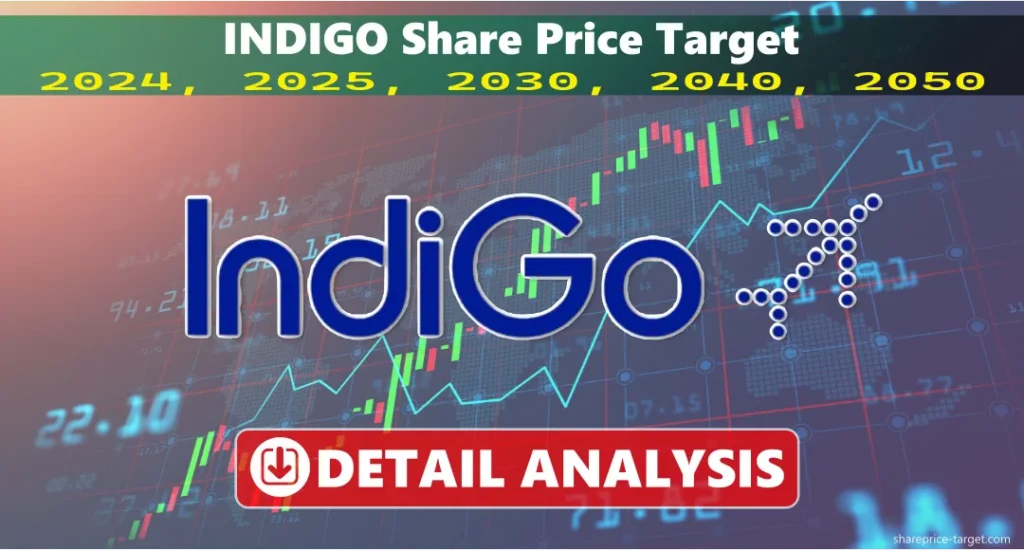
Bull Case:
- Market leader with a 62% share in the rising Indian aviation market
- High brand awareness and consumer loyalty
- Low-cost, efficient strategy with industry-leading profits
- Large worldwide growth potential
- Strong liquidity and balance sheet
Bear Case:
- Fuel price and currency volatility vulnerability
- Indian price-sensitive market competitiveness is fierce.
- Potential aviation policy changes and regulatory hazards
- Aviation cyclicality
- Impact of future pandemics or global recessions
Conclusion
IndiGo has become a leading Indian aviation company by adapting to difficult circumstances. The company’s solid foundation, efficient operations, and expansion strategy equip it for success. However, like any aviation investment, IndiGo stock is vulnerable to industry volatility, competitive challenges, and external reasons.
IndiGo stock investors should measure long-term development against dangers in the airline sector. This article’s forecasts are based on current trends and past performance, but the stock market is unpredictable so outcomes may vary.
As usual, diversify your investment portfolio and contact a financial counselor before making significant investments.

